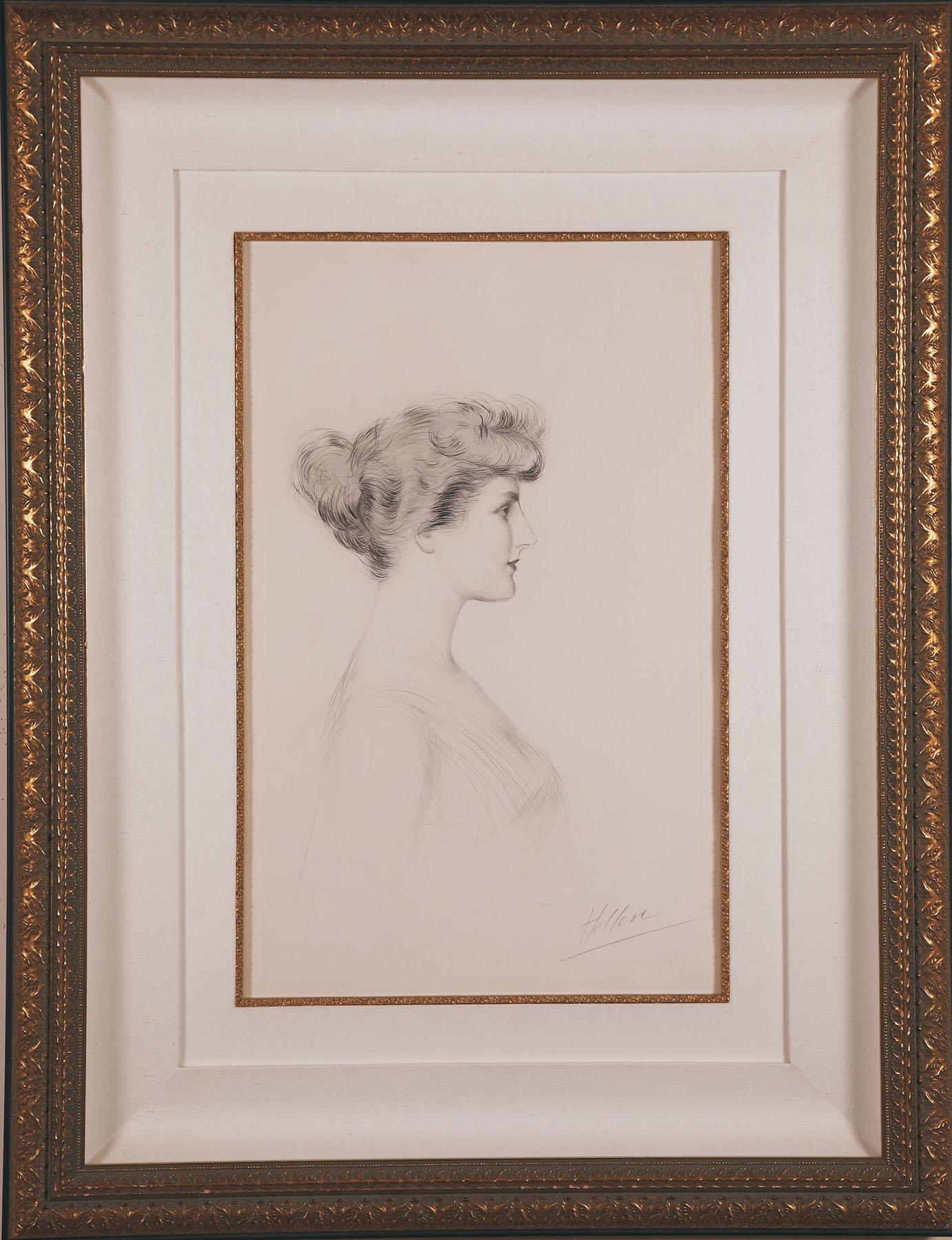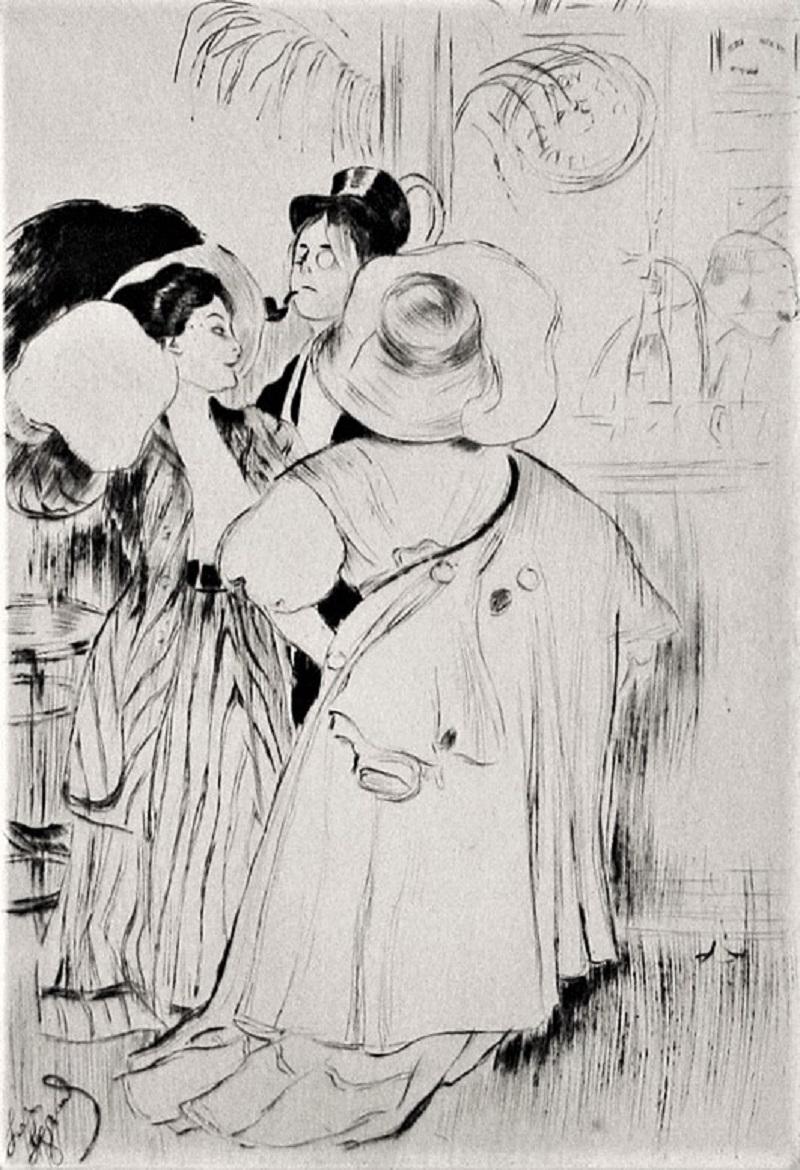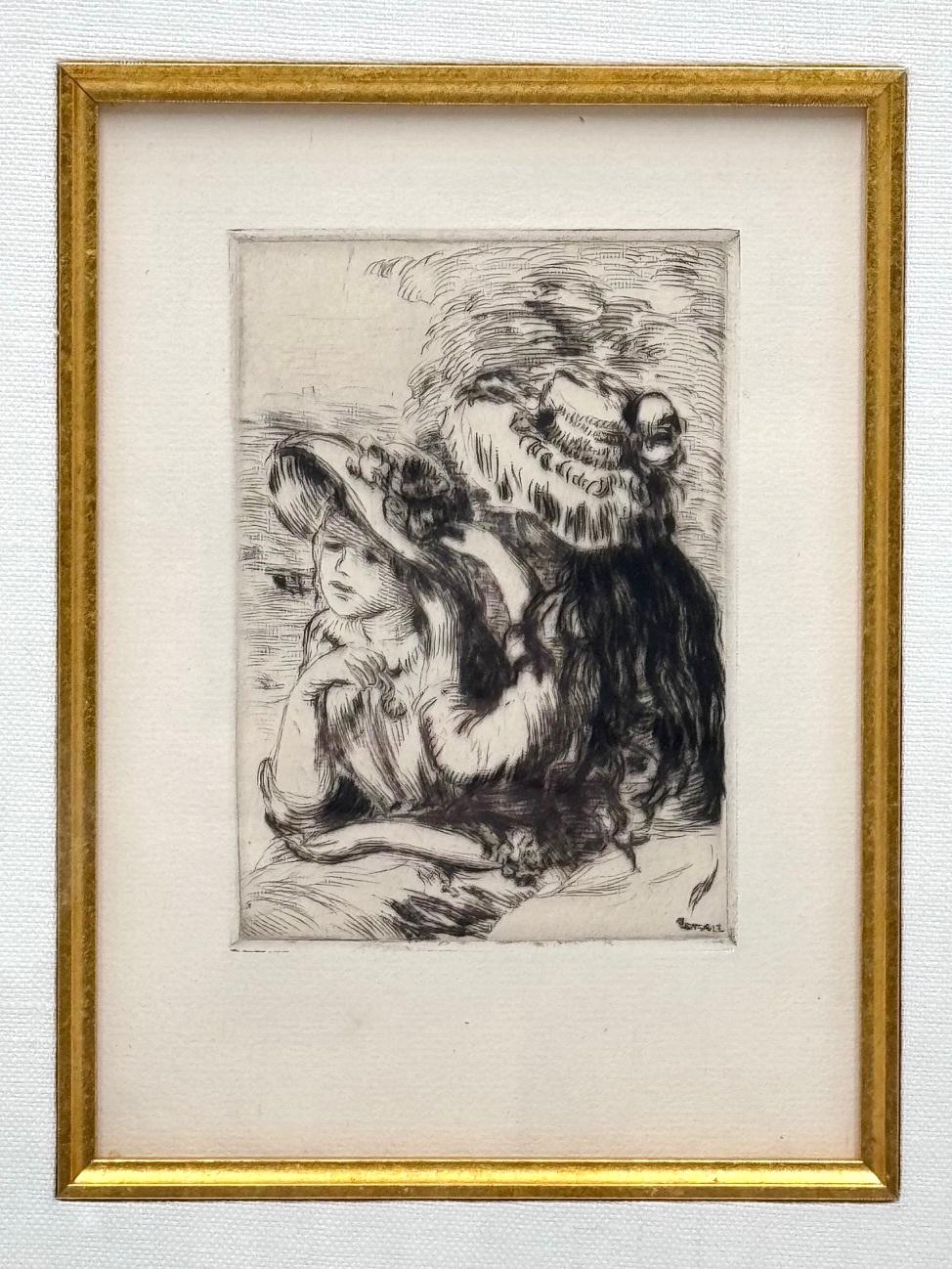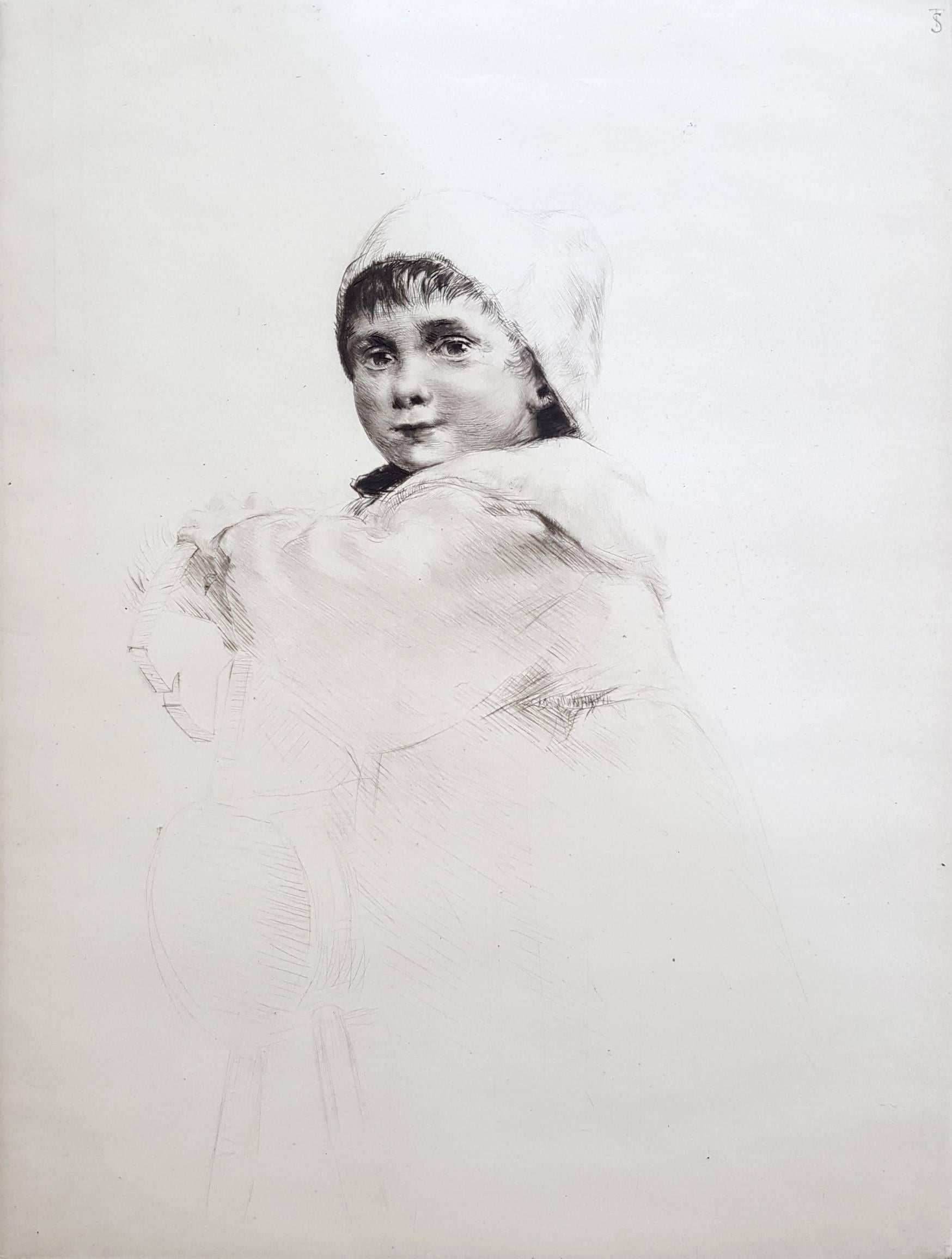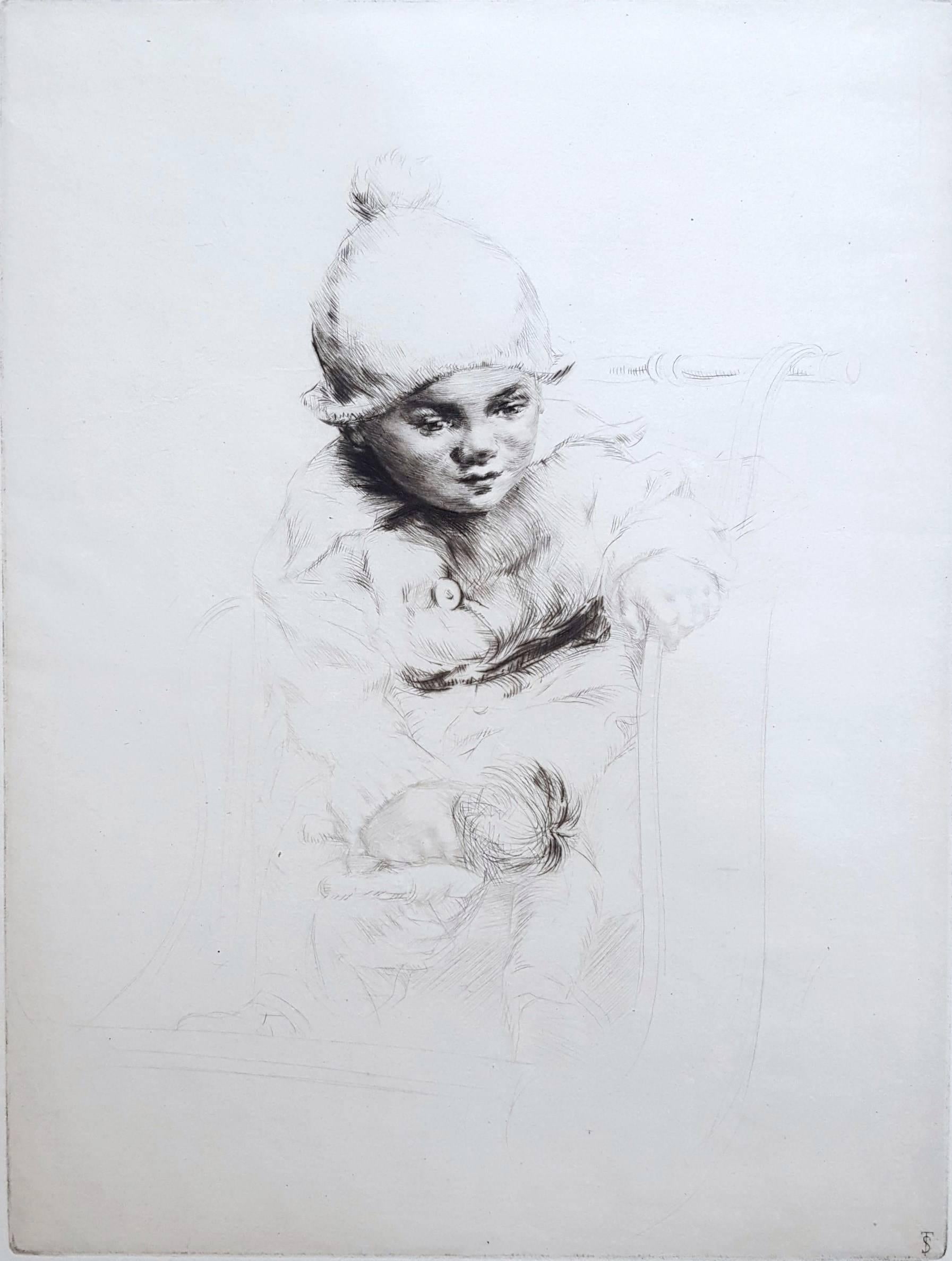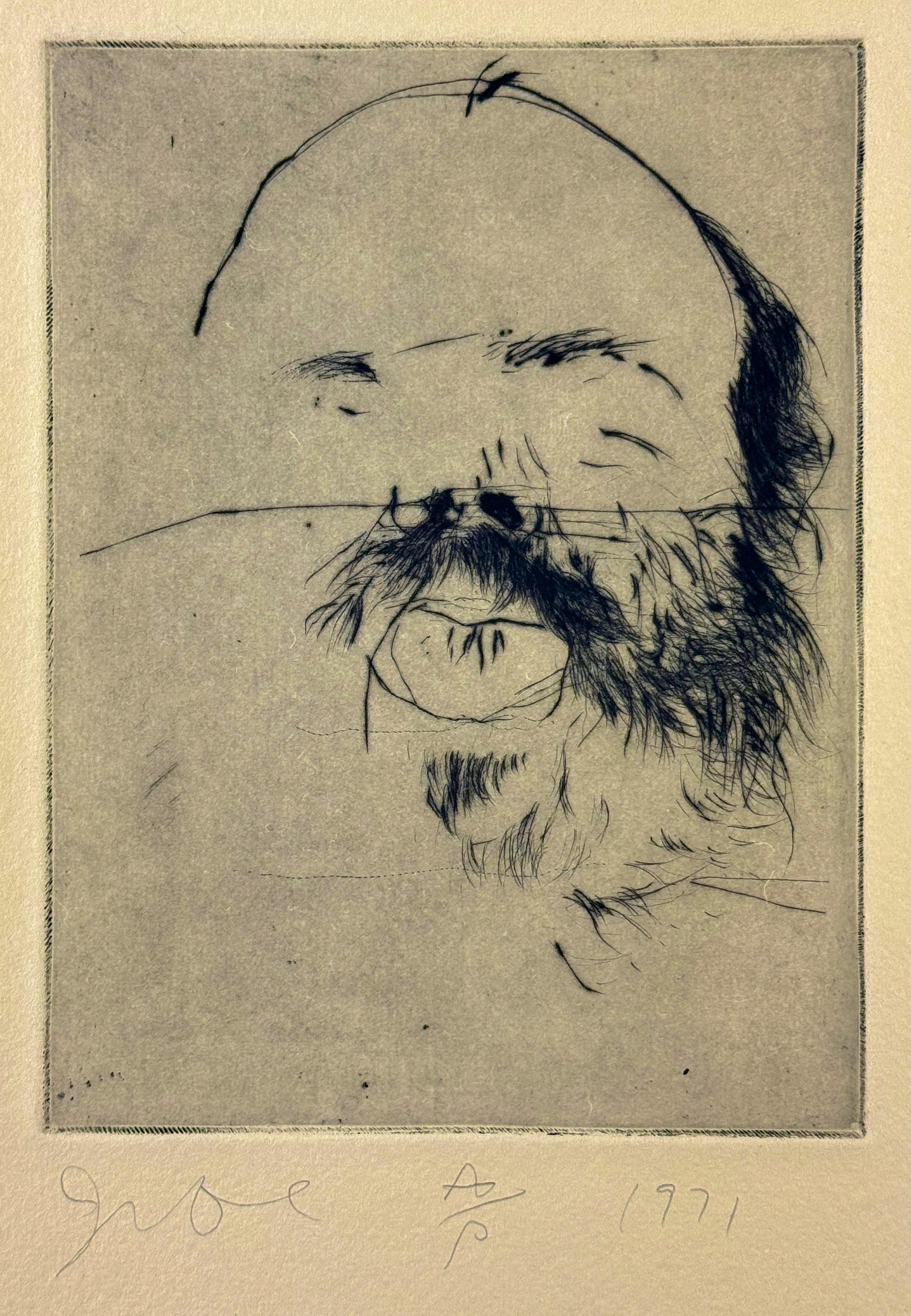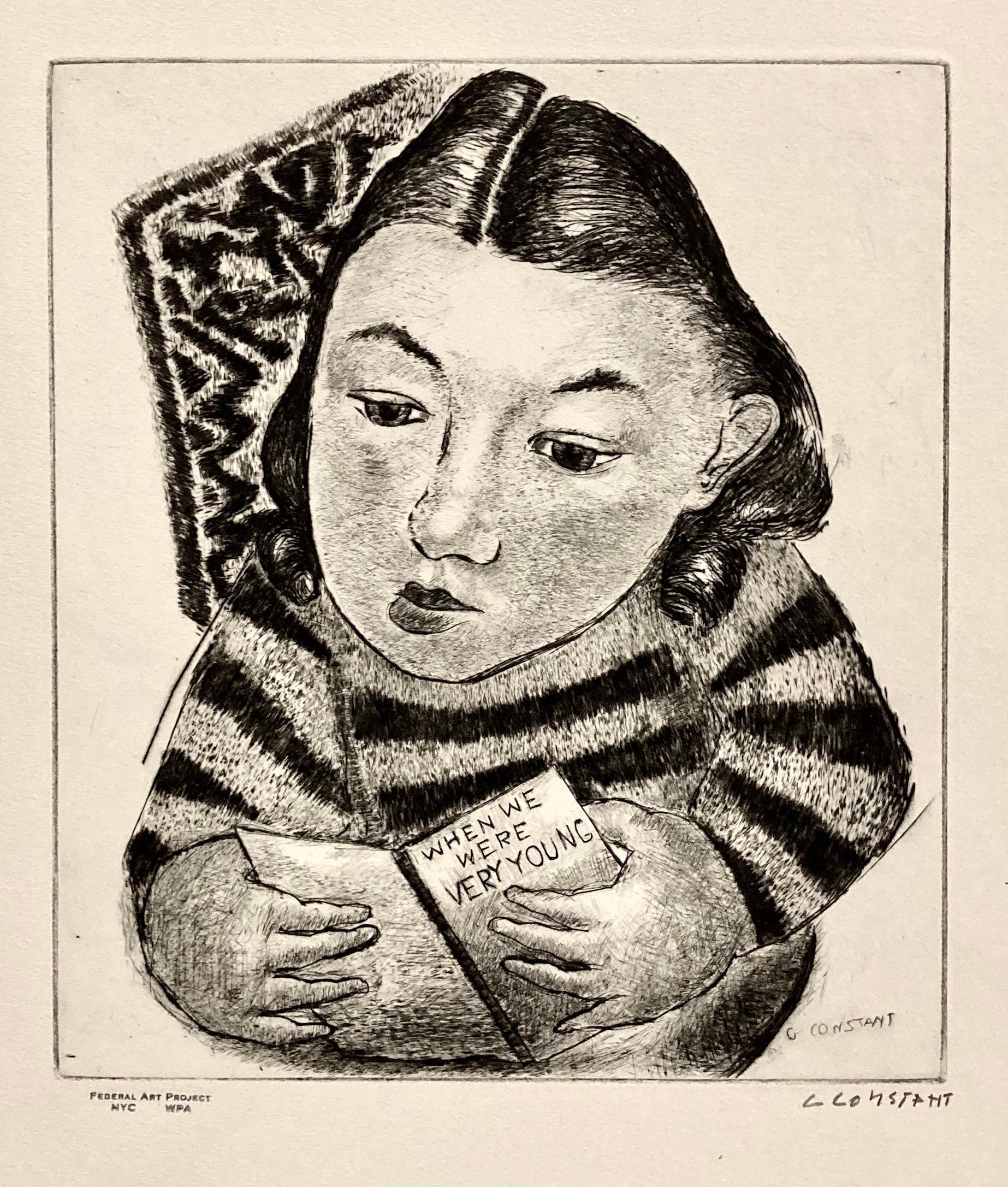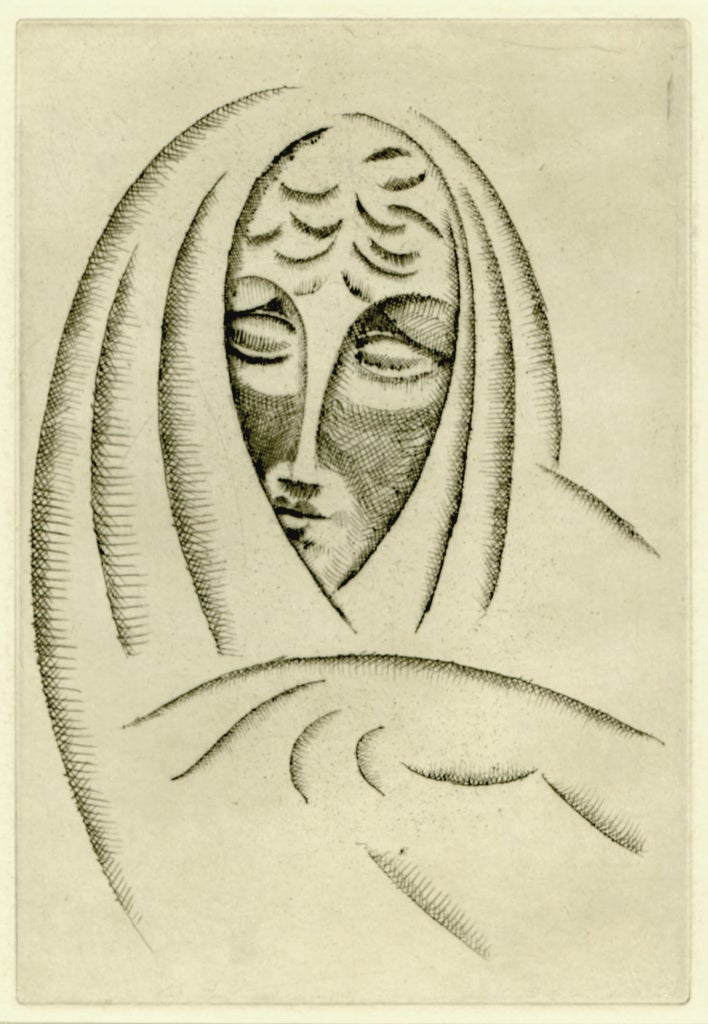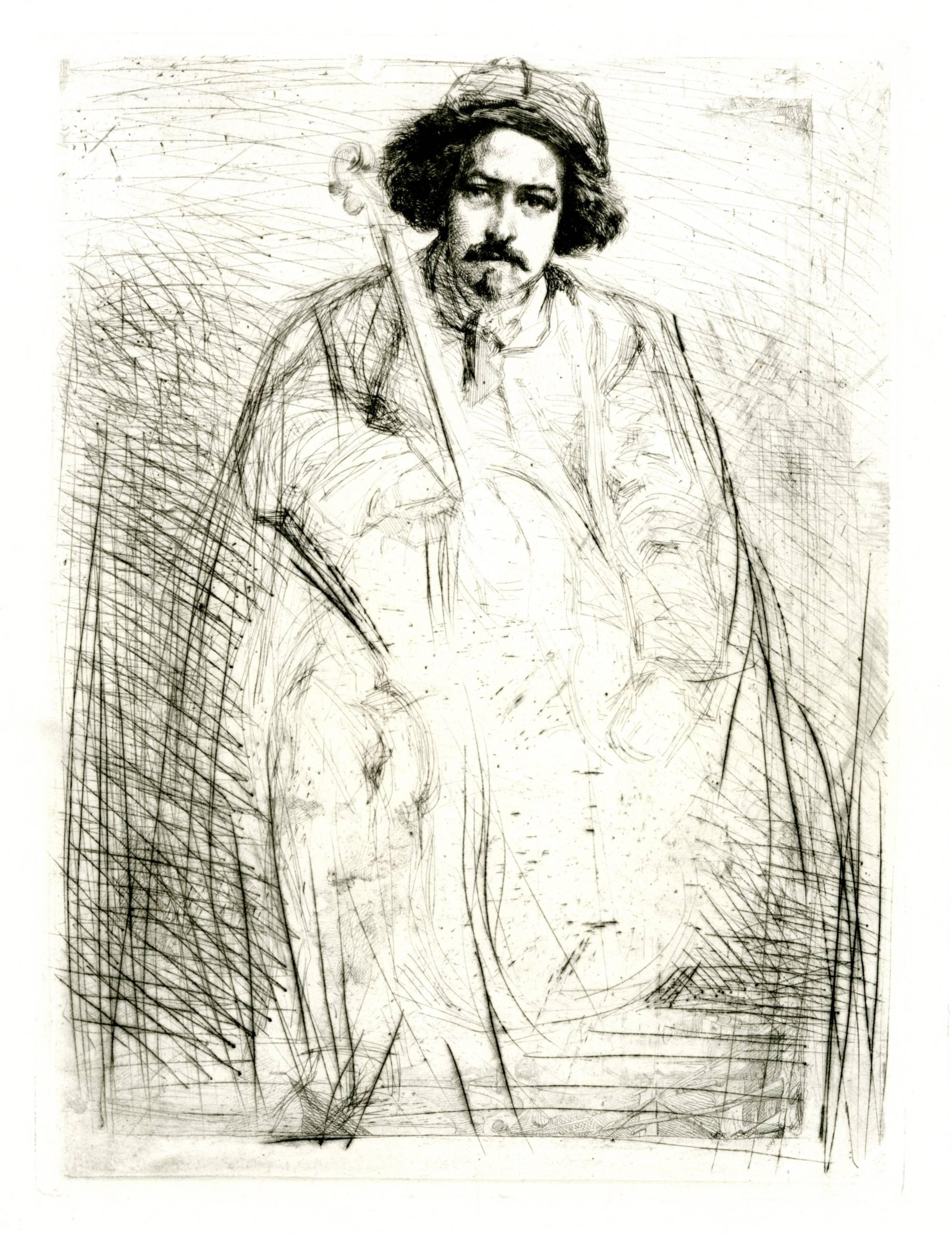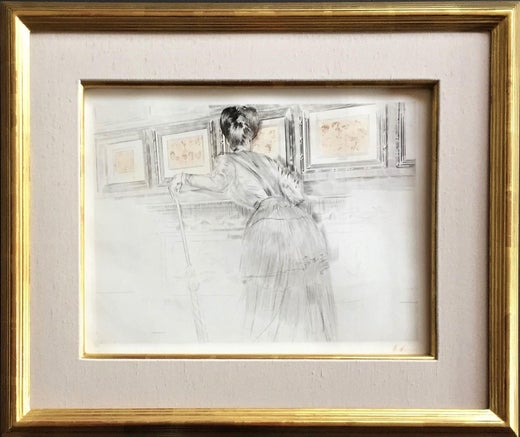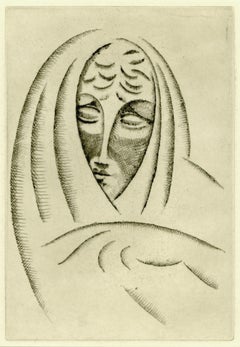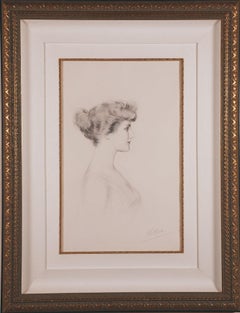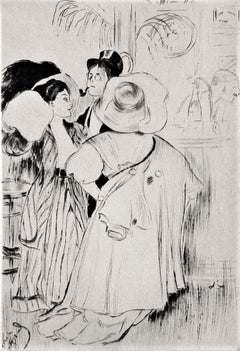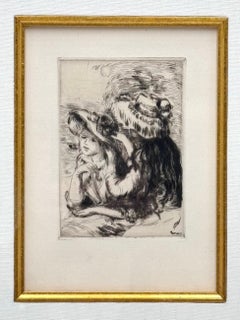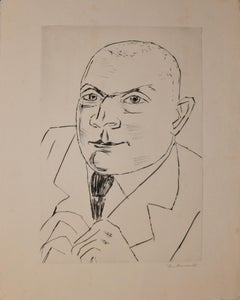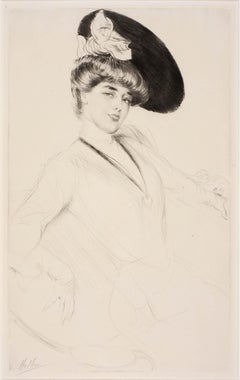
Miss Taylor
View Similar Items
Want more images or videos?
Request additional images or videos from the seller
1 of 8
Paul César HelleuMiss Taylorc. 1900
c. 1900
$3,500List Price
About the Item
- Creator:Paul César Helleu (1859-1927, French)
- Creation Year:c. 1900
- Dimensions:Height: 21.25 in (53.98 cm)Width: 13.25 in (33.66 cm)
- Medium:
- Movement & Style:
- Period:
- Condition:
- Gallery Location:Fairlawn, OH
- Reference Number:Seller: FA35571stDibs: LU14011267022
Paul César Helleu
Rich impression with dramatic drypoint burr and tone no other artist epitomizes the whole atmosphere of elegance and hedonistic pleasure which pervaded Paris society at the first decade of the century as does Helleu. A close friend of Proust and the inspiration for one of the principal characters in La Recherche du Temps Perdu, Helleu’s whole life style echoed the incomparable elegance and flow of his drawing, the sheer style of his art, and his eye for the poses of the beautiful women who were his friends and his patrons. During the 1870’s, Helleu had come to know the painters of Impressionism and also artists Sargent and Whistler who became his special friends and inspiration. By the early 1880’s, he had already developed the quality of expressive sweeping line, which is the essence of his drawing, but in 1885 he was encouraged by Tissot to try working on prints in drypoint. At this time, Tissot had decided, after the death of his lover and model Kathleen Newton, to travel to the Holy Land on an artistic pilgrimage. Having decided he would no longer engrave, he gave Helleu his diamond stylus…a literal and figurative “passing of the baton”. It was in the incision and texture of drypoint that his art was to reach one of its greatest peaks. He had an innate feel for the balance between a lightly curving stroke and the deeply cut highly tonal burr of the strongest drypoint. Around the turn of the century he started to combine drypoint with multi-inking in colors, the areas of color restricted to such touches as the bows on the hats, the hair color or the red of the lips. The plate was drawn at a single sitting, and then the color inks were brushed onto it. The results are some of the most splendid and decorative of all Belle Époque prints.
About the Seller
5.0
Recognized Seller
These prestigious sellers are industry leaders and represent the highest echelon for item quality and design.
Gold Seller
Premium sellers maintaining a 4.3+ rating and 24-hour response times
Established in 1978
1stDibs seller since 2013
798 sales on 1stDibs
Associations
International Fine Print Dealers Association
Authenticity Guarantee
In the unlikely event there’s an issue with an item’s authenticity, contact us within 1 year for a full refund. DetailsMoney-Back Guarantee
If your item is not as described, is damaged in transit, or does not arrive, contact us within 7 days for a full refund. Details24-Hour Cancellation
You have a 24-hour grace period in which to reconsider your purchase, with no questions asked.Vetted Professional Sellers
Our world-class sellers must adhere to strict standards for service and quality, maintaining the integrity of our listings.Price-Match Guarantee
If you find that a seller listed the same item for a lower price elsewhere, we’ll match it.Trusted Global Delivery
Our best-in-class carrier network provides specialized shipping options worldwide, including custom delivery.More From This Seller
View AllMiss Taylor
By Paul César Helleu
Located in Fairlawn, OH
Miss Taylor
Drypoint, c. 1900
Signed in pencil lower left (see photo)
Small edition, about 10
Very rich impression, full of burr
Condition: Excellent
Image size: 21-1/4 x 13-1/4"
She...
Category
Early 1900s Art Nouveau Portrait Prints
Materials
Drypoint
Woman's Head
By Elie Nadelman
Located in Fairlawn, OH
Edition of 50 printed by Charles White in 1951 for the estate
Bibliography:
Lincoln Kirstein, Elie Nademan (New York: The Eakins Press, 1973),, 20
Elie Nadelman
Born 1882, Warsaw...
Category
1920s American Modern Prints and Multiples
Materials
Drypoint
J. Becquet, Sculptor
By James Abbott McNeill Whistler
Located in Fairlawn, OH
J. Becquet, Sculptor
Etching & drypoint, 1859
Unsigned as issued
From: The Thames Set
Printed on this Japanese tissue
Rich impression
Condition: Excellent
Plate/Image size: 9 7/8 x 7...
Category
19th Century Impressionist Portrait Prints
Materials
Drypoint, Etching
If you're too cool, you lose.
By Darius Steward
Located in Fairlawn, OH
Signed, dated and numbered in pencil
Printer: Rebekah Wilhelm, Zygote Press, Cleveland
Created at Zygote Press, Cleveland, 2015, while the artist was an Artist in Residence.
Exhib...
Category
2010s Contemporary Figurative Prints
Materials
Drypoint
Woman's Head in Profile - Woman's Head in Profile (left) (Havard)
By Elie Nadelman
Located in Fairlawn, OH
Woman's Head in Profile - Woman's Head in Profile (left) (Havard)
Drypooint, 1920
Unsigned (as usual)
From: The Drypoints of Elie Nadelman, 21 unpublished prints by the sculptor, pro...
Category
1920s American Modern Portrait Prints
Materials
Drypoint
Darius II
By Darius Steward
Located in Fairlawn, OH
Signed in pencil lower right
Edition: 3 impressions
Signed, dated and annotated “1 of 3”
Exhibited: Zygote Press, Cleveland, 2016
Tregoning & Co. 2017
Category
2010s Contemporary Figurative Prints
Materials
Drypoint
You May Also Like
"Madame Georges Menier" Portrait, by Paul Cesar Helleu
By Paul César Helleu
Located in Hinsdale, IL
HELLEU, PAUL CÉSAR
(1859 -1927)
"MADAME GEORGES MENIER"
Montesquiou XXI
Drypoint in colors, c. 1900
Signed in pencil, lower right
Printed on wove paper
Full...
Category
Early 20th Century Art Nouveau Portrait Prints
Materials
Drypoint
English Bar
By Louis Legrand
Located in Storrs, CT
English Bar. 1908. Etching and drypoint. Exsteens catalog 275 state ii. 8 1/8 x 5 5/8 (sheet 17 3/8 x 12 1/4). Series: Les Bars. Edition 65 in this state (total edition 95). Printed ...
Category
Early 1900s Art Nouveau Figurative Prints
Materials
Drypoint, Etching
$800 Sale Price
54% Off
Le Chapeau Épinglé
By Pierre Auguste Renoir
Located in Los Angeles, CA
"PIERRE-AUGUSTE RENOIR (1841-1919)
Le Chapeau Épinglé, 1ère Planche (Delteil; Stella 6)
Drypoint, 1894-95, on laid paper, with watermark MBM, an extr...
Category
1890s Portrait Prints
Materials
Drypoint
Portrait of Baron Simolin II (large version)
By Max Beckmann
Located in Roma, RM
Max Beckmann (Leipzig 1884 – New York 1950), Portrait of Baron Simolin II (large version)(1928)
Drypoint, 38 x 25 cm (plate), 48 x 40 cm (sheet), signed and dated lower right.
Category
1920s Expressionist Portrait Prints
Materials
Drypoint
Molly /// Antique Victorian Etching Portrait Figurative British Children Child
By Sidney Tushingham
Located in Saint Augustine, FL
Artist: Sidney Tushingham (English, 1884-1968)
Title: "Molly"
*Signed by Tushingham in pencil lower right. It is also monogram signed in the plate (printed signature) upper right
Cir...
Category
1910s Impressionist Portrait Prints
Materials
Drypoint, Etching, Laid Paper, Intaglio
Peggy /// Antique Victorian Etching Portrait Figurative British Children Child
By Sidney Tushingham
Located in Saint Augustine, FL
Artist: Sidney Tushingham (English, 1884-1968)
Title: "Peggy"
*Signed by Tushingham in pencil lower right. It is also monogram signed in the plate (printed signature) lower right
Cir...
Category
1910s Impressionist Portrait Prints
Materials
Drypoint, Etching, Laid Paper, Intaglio
Recently Viewed
View AllMore Ways To Browse
Locke And Co
Crying Girl
Harriet Tubman
Shepard Fairey Future
Chuck Close Self Portrait
Guidi Virgilio
Hockney Celia
Vanity Fair Spy Lithographs
Warhol Indian Print
Warhol Indian Series
Bartolozzi Engraving
Dali Twelve Apostles
Joe Monroe
Lenox Tiffany
Salvador Dali The Twelve Apostles
Warhol Trial Proof
Sheldon Fink
Andy Warhol Drag
